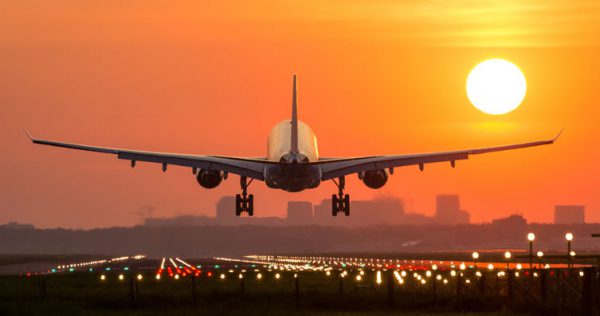SINGAPORE, 24 June 2021: Destinations are looking to international airlines to deliver them from the Covid-19 storm, but who will save the airlines from financial collapse?

Air India
Air India is in the throes of “disinvestment” as the government attempts to end decades of heavy losses and state intervention to keep the airline flying.
India’s Economic Times reported this week that disinvestment-bound Air India hopes to raise USD26.9 million to USD40.3 million by selling commercial and residential real estate assets in e-commerce auctions across the country starting 8 July.
A special-purpose business unit – Air India Assets Holding Ltd – has been set up to hold the non-core assets of the Air India group, many of which will be sold off to raise cash.
Singapore Airlines
Singapore Airlines describes its financial year ending 31 March 2021 as the “toughest year in its history.” Singapore Airlines Group slumped to a record SGD4.3 billion full-year net loss for the financial year reversing the SGD$59 million operating profit it made the previous year. At the operating level, the group was SGD2.5 billion in the red.
Vietnam Airlines
In Vietnam, three banks pledged interest-free loans to prop up Vietnam Airlines, according to a Reuters report earlier this week. The banks will lend 4 trillion dong (USD173.8 million) to the national airline to weather the impact of the pandemic and avoid bankruptcy, state media reported on Monday.
Media reports identified the Vietnam Maritime Commercial Joint Stock Bank, Saigon – Hanoi Commercial Joint Stock Bank and SeABank, claiming the interest-free loans should be available in July. The airline, which is 86% owned by the government, reported a net loss of 4.97 trillion dong (USD216.5 million) in the first quarter.
Garuda Indonesia
Last Friday, trading of Garuda Indonesia’s shares halted over bond default AFP reported. Indonesia’s stock exchange suspended trading after the country’s national airline missed a key bond payment, fanning fears that the cash strapped airline was heading for bankruptcy.
The Jakarta-based bourse cited Garuda’s default on a USD500 million Islamic bond, known as ‘sukuk’, for suspending share trading “until further notice”.
Garuda received a government rescue package last year and has been offering early retirement to its employees as it scrambles to restructure. The airline posted a loss of more than USD1 billion in the nine months to September. It has yet to report its full-year financial results for 2020.
Philippine Airlines
Philippine Airlines is heading for a major restructuring that local media says could cut some long-haul flights to slow cash burn. The Philippine Daily Inquirer quoted aviation expert and former Philippine Airlines president Avelino Zapanta saying the cuts may include the flag carrier’s flights from Manila to London and New York.
International operations contributed around 80% of PAL revenues from 2018 to 2020, while domestic service accounted for 20%, according to PAL Holdings’ 2020 annual report.
“PAL will have a long way to go for recovery. The uncertainty of the situation still prevails, but news on the availability of COVID-19 vaccine brings hope that passenger traffic will be better than 2020,” the annual report stated.
Local media reports claim PAL intends to file a Chapter 11 creditor protection petition in the US to shield its assets and restructure hundreds of billions of pesos in obligations.
Thai Airways International
The Central Bankruptcy Court of Thailand gave the go-ahead for Thai Airways’ rehabilitation plan earlier this month. The green light means the airline will now embark on the painful tasking of returning to profit. Thai Airways International has been reporting losses since 2013 that ultimately forced the airline to seek protection under the country’s Central Bankruptcy Court last year. That kept creditors at bay until a Business Rehabilitation Plan gained the court’s approval earlier this month.
According to the latest financial results, in 2020, the airline suffered a record loss of THB141 billion (USD4.6 billion) amid the ongoing pandemic. Previous losses ran up to THB12 billion (USD385 million) in 2019, THB11.6 billion (USD372 million) in 2018, and THB2.1 billion baht (USD68 million) in 2017.
Malaysia Airlines
Channel News Asia reported last week that Malaysia Airlines could be facing an even trickier situation than its Thai neighbour.
CNA stated that the airline has been recording losses for a decade, made worse by the twin tragedies of MH370’s disappearance and the MH17 shoot-down in Ukraine in 2014. The Malaysian flag carrier was subsequently privatised and taken over by sovereign wealth fund Khazanah Nasional that invested USD1.5 billion in propping up the airline financially.
Malaysia Airlines has yet to file its 2020 financial statements with the Companies Commission of Malaysia. However, its 2019 financials showed revenue of MYR9 billion but a net loss of MYR923.79 million after-tax.
The pandemic prompted the company to introduce extensive salary cuts for the entire management team and employees and no-pay leave as early as March 2020.
Khazanah Nasional, as the sole shareholder in Malaysia Airlines Group, has pledged to supply MYR3.6 billion to fund MAG until 2025.
Against the background, tourist destinations are hoping to begin a staggered reopening during the last quarter of the year. Their optimistic projections are based on airlines resuming services on par with levels of 2019. That might not be possible as the airlines struggle with massive debt that will limit route and flight expansion, possibly for years to come.
Passenger traffic globally fell by two-thirds in 2020, prompting the International Air Transport Association to forecast 2021 could close 50% off 2019 levels. Full recovery remains some distance off, possibly in 2023.







